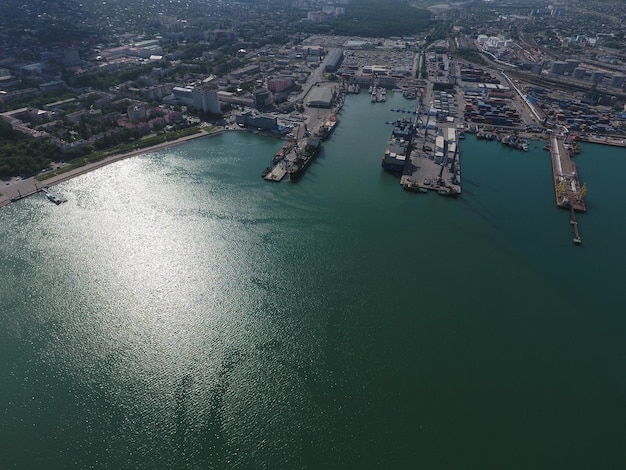US Response to China’s Influence in Latin America: A Geopolitical Analysis

How Will the US Respond to China’s Growing Influence in Latin America? A Geopolitical Analysis examines the strategies the United States might employ to counter China’s increasing economic and political presence in the region, considering factors like trade, diplomacy, and security.
The growing influence of China in Latin America has become a significant geopolitical concern for the United States. This article will explore How Will the US Respond to China’s Growing Influence in Latin America? A Geopolitical Analysis, examining potential strategies and their implications.
Understanding China’s Growing Influence
China’s expanding footprint in Latin America is multifaceted, encompassing trade, investment, and diplomatic engagement. This influence presents both opportunities and challenges for the region and prompts a crucial question: How will the US respond?
China’s approach has been largely economic, focusing on infrastructure development and resource extraction. This has led to increased trade volumes and stronger economic ties between China and many Latin American nations.
Economic Expansion
China’s economic initiatives in Latin America have deepened over the past two decades, reshaping the region’s economic landscape. This expansion involves significant investments in infrastructure, such as ports, roads, and railways, facilitating trade and resource movement.
- Increased trade: China has become a primary trading partner for many Latin American countries, often surpassing the US.
- Infrastructure investment: Billions of dollars have been invested in infrastructure projects, enhancing connectivity and stimulating economic growth.
- Resource dependency: Many Latin American nations have become heavily reliant on exporting raw materials to China, creating economic dependencies.
This economic engagement is crucial for understanding the overall dynamics and implications of China’s influence in Latin America.

Potential US Responses: A Multifaceted Approach
The US has several options to counter China’s expanding influence, ranging from bolstering economic partnerships to strengthening security cooperation. Each strategy comes with its own set of advantages and disadvantages.
A successful US response will likely involve a combination of economic, diplomatic, and security initiatives, tailored to the specific needs and contexts of individual Latin American countries.
Strengthening Economic Ties
One of the primary ways the US can respond is by enhancing economic relationships with Latin American countries. This includes promoting trade, investment, and economic development initiatives that offer alternatives to Chinese engagement.
- Trade agreements: Negotiating and implementing comprehensive trade agreements that provide favorable terms for Latin American exports.
- Investment incentives: Encouraging US companies to invest in Latin America by offering tax incentives and reducing regulatory burdens.
- Development aid: Increasing development assistance to support economic diversification and sustainable growth in the region.
A comprehensive approach to strengthening economic ties will be essential for countering China’s influence.
Diplomatic Strategies and Alliances
Diplomacy plays a crucial role in shaping the US response. Building strong relationships with Latin American governments and fostering regional alliances can help counter China’s growing influence.
This involves engaging in high-level dialogues, supporting democratic institutions, and promoting shared values. Maintaining open channels of communication is key.
Fostering Regional Cooperation
The US can play a key role in fostering greater regional cooperation among Latin American nations. This includes supporting regional organizations and initiatives that promote economic integration and security cooperation.
- Supporting regional bodies: Strengthening the role and capacity of organizations like the Organization of American States (OAS).
- Promoting integration: Encouraging greater economic and political integration among Latin American countries.
- Security cooperation: Working with regional partners to address common security threats, such as drug trafficking and transnational crime.
These efforts can help create a more unified and resilient region, capable of resisting undue external influence.
Security Implications and Cooperation
The growth of Chinese influence also has significant security implications for the US and Latin America. Strengthening security cooperation with regional partners is essential. The question is: How will the US respond?
This encompasses everything from joint military exercises to intelligence sharing and capacity building. A coordinated approach is critical.

Addressing Security Concerns
The US and its Latin American partners face a range of shared security challenges, including drug trafficking, transnational crime, and cyber threats. Addressing these concerns requires a coordinated and collaborative approach.
- Joint military exercises: Conducting joint military exercises to enhance interoperability and preparedness.
- Intelligence sharing: Improving intelligence sharing and coordination to address common security threats.
- Capacity building: Providing assistance to Latin American countries to strengthen their security capabilities.
By working together to address these challenges, the US and its partners can enhance regional security and stability.
Economic Competition and Alternatives
Competing economically with China in Latin America requires the US to offer compelling alternatives. This involves promoting investment, trade, and development initiatives. Consider: How will the US respond effectively?
A key factor is providing support for infrastructure projects that benefit local communities, as well as initiatives that boost economic development more generally.
Investing in Sustainable Development
The US can differentiate itself by investing in sustainable development projects that prioritize environmental protection and social equity. This approach can resonate with Latin American countries that are increasingly concerned about the impacts of climate change and social inequality.
- Renewable energy: Supporting the development of renewable energy projects, such as solar, wind, and hydropower.
- Sustainable agriculture: Promoting sustainable agricultural practices that reduce deforestation and protect biodiversity.
- Social programs: Investing in social programs that address poverty, inequality, and access to education and healthcare.
By focusing on sustainable development, the US can offer a more responsible and long-term approach to economic engagement.
Navigating the Future: Challenges and Opportunities
The future of US-China relations in Latin America will be shaped by a complex interplay of challenges and opportunities. The key is to adapt to changing circumstances and pursue strategies that promote long-term stability and prosperity. Think: How will the US respond in the long term?
Both the US and China have legitimate interests in the region, which opens avenues for cooperation as well as competition. The approach should be balanced and nuanced.
| Key Point | Brief Description |
|---|---|
| 🌍 Economic Expansion | China’s heavy investment in infrastructure and trade. |
| 🤝 Diplomatic Strategies | US efforts to build alliances and regional cooperation. |
| 🛡️ Security Cooperation | Joint efforts to address security threats in the region. |
| 🌱 Sustainable Development | US investments in eco-friendly projects. |
Frequently Asked Questions
▼
China’s influence is driven by trade, investment, and infrastructure projects, offering Latin American countries economic opportunities and filling gaps left by traditional partners.
▼
The US is strengthening economic ties through trade agreements, investment incentives, and development aid, providing alternatives to Chinese engagement.
▼
Diplomacy helps build strong relationships with Latin American governments, fostering regional alliances and promoting shared values.
▼
Security concerns include potential challenges to US dominance, intellectual property rights, and the rise of authoritarian influence in democratic nations.
▼
By investing in renewable energy, sustainable agriculture, and social programs. This offers a more responsible and long-term approach.
Conclusion
In conclusion, the US response to China’s growing influence in Latin America necessitates a comprehensive approach. This strategy should integrate economic competitiveness, diplomatic engagement, and security cooperation, tailored to the unique needs of each country in the region. By offering a compelling vision for sustainable development and regional stability, the US can effectively balance China’s increasing role and foster a prosperous future for Latin America.



